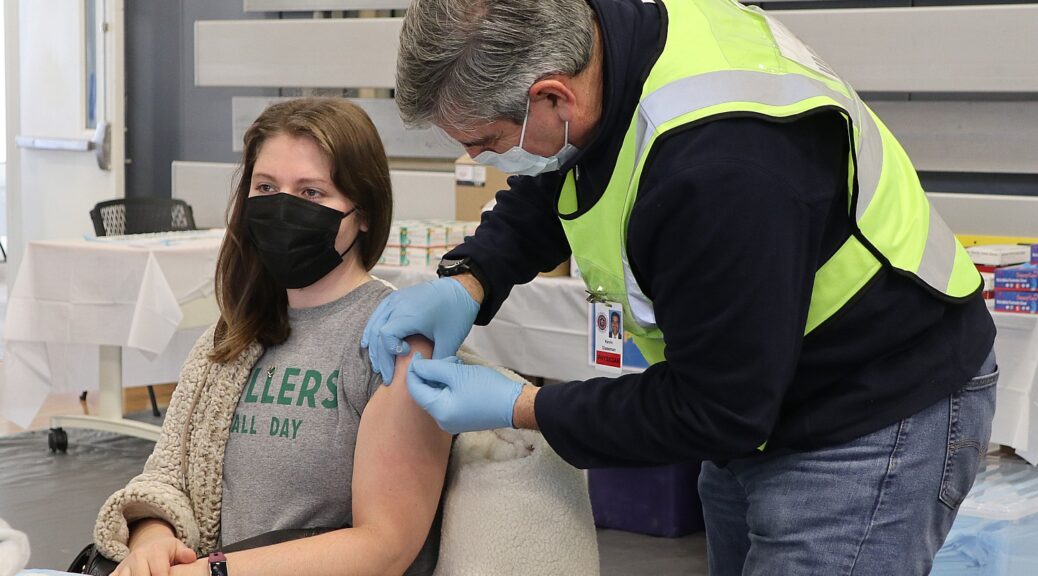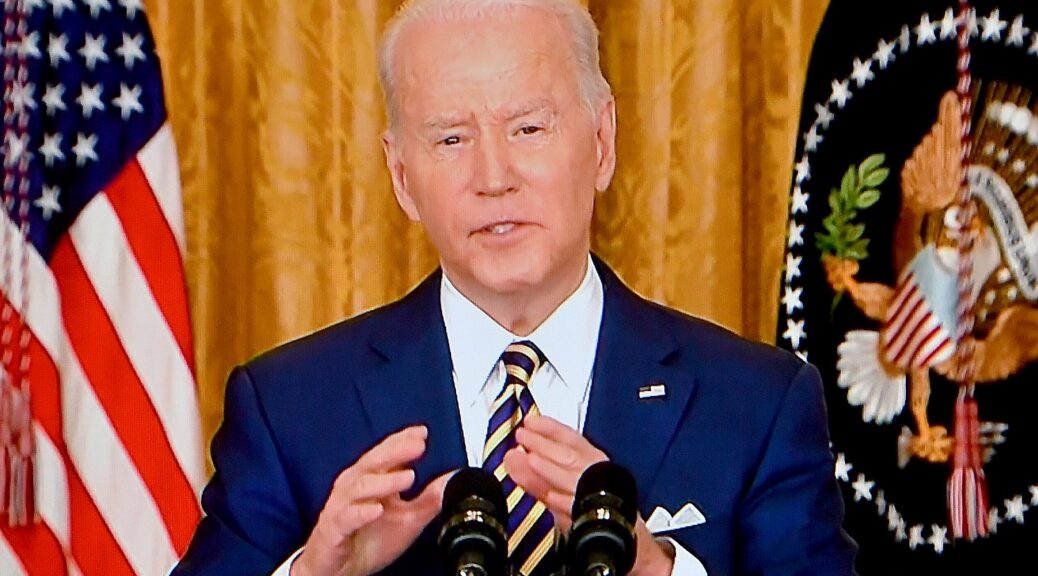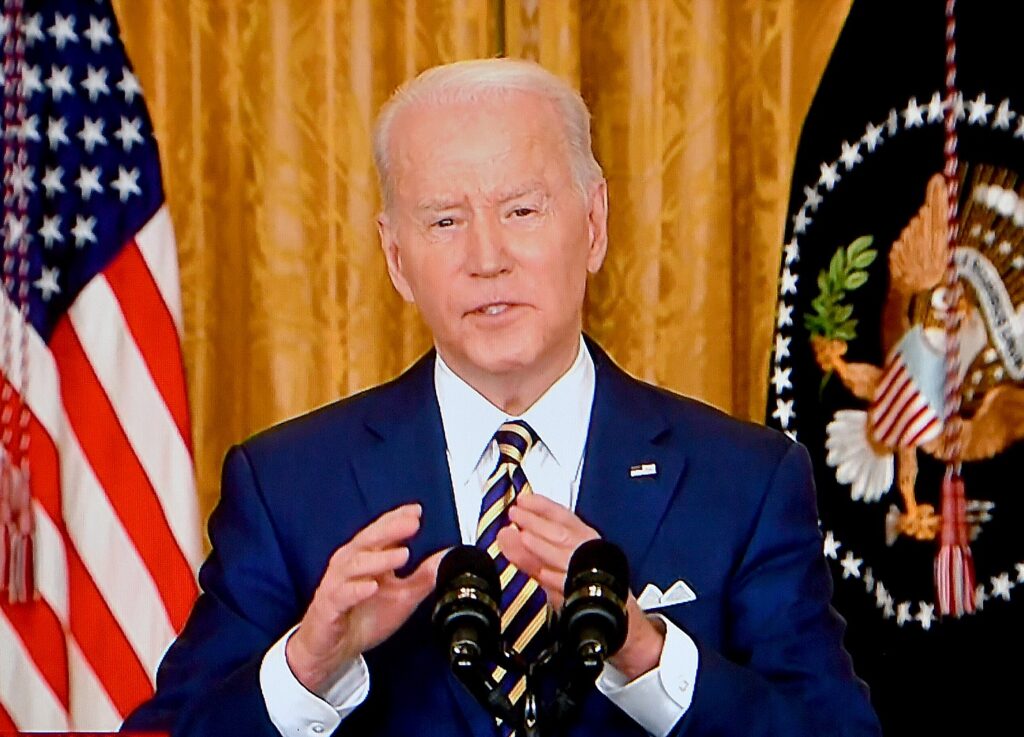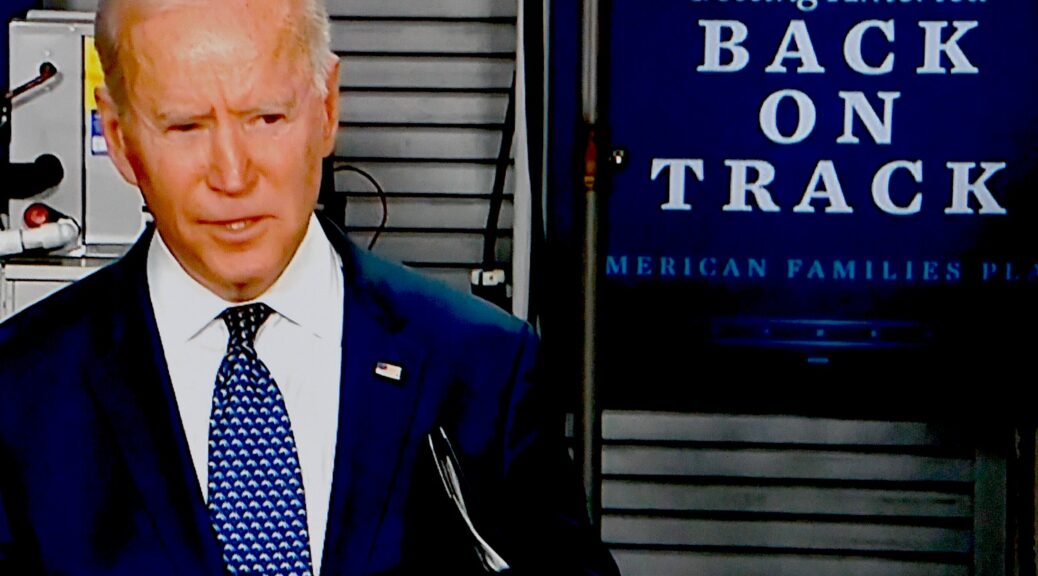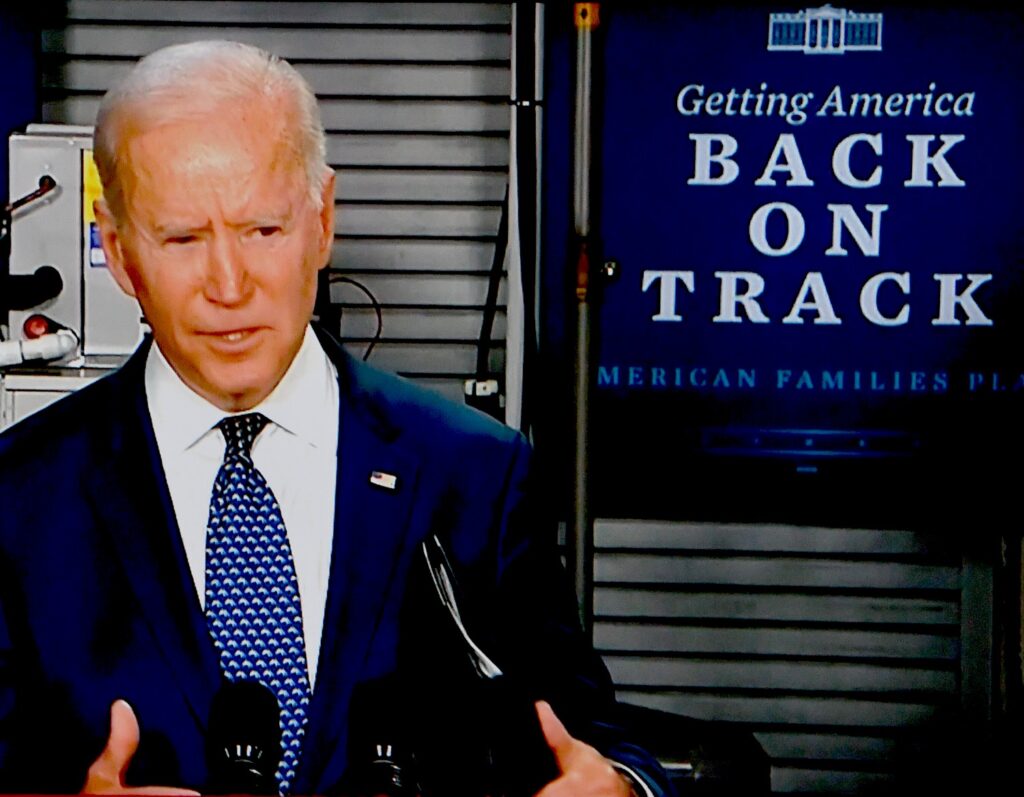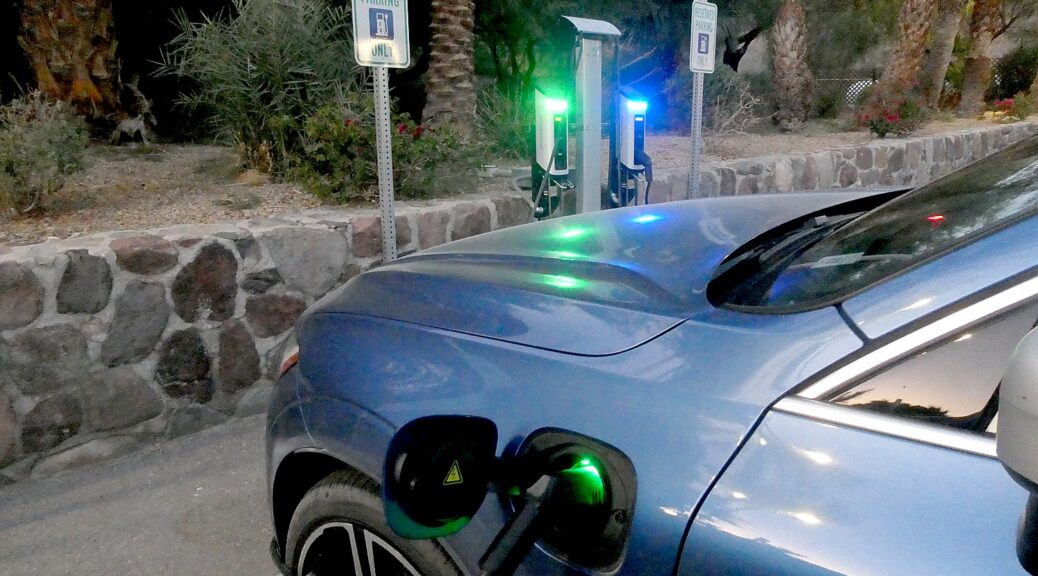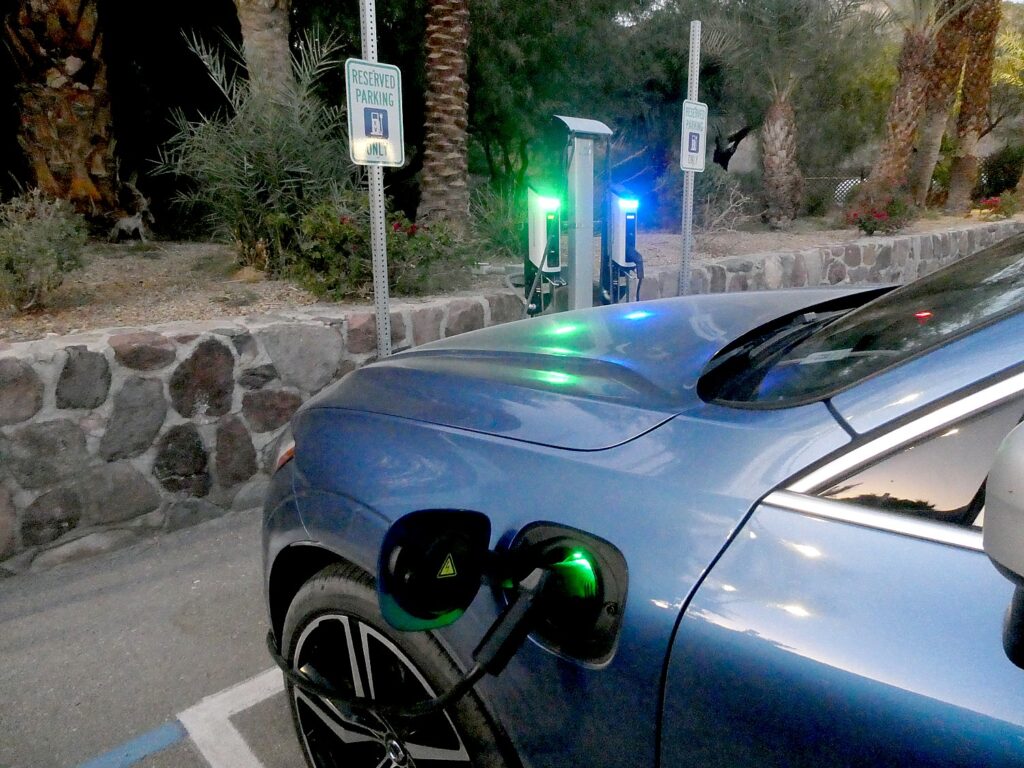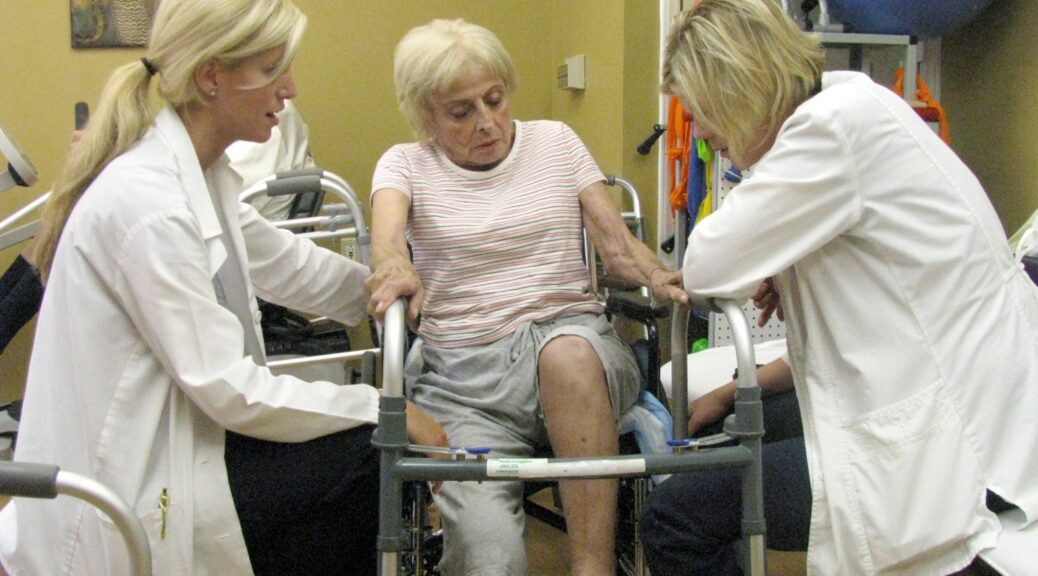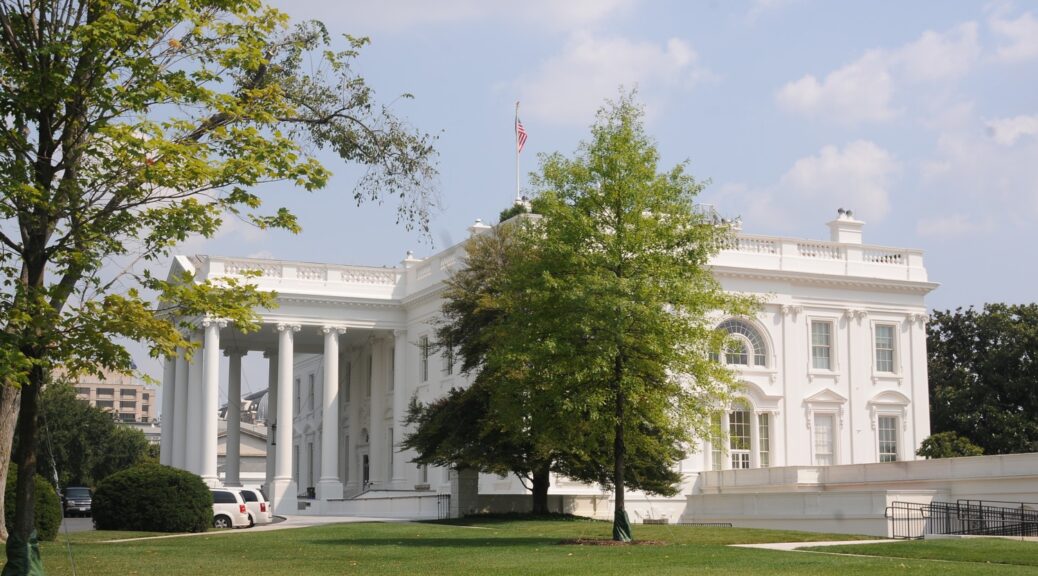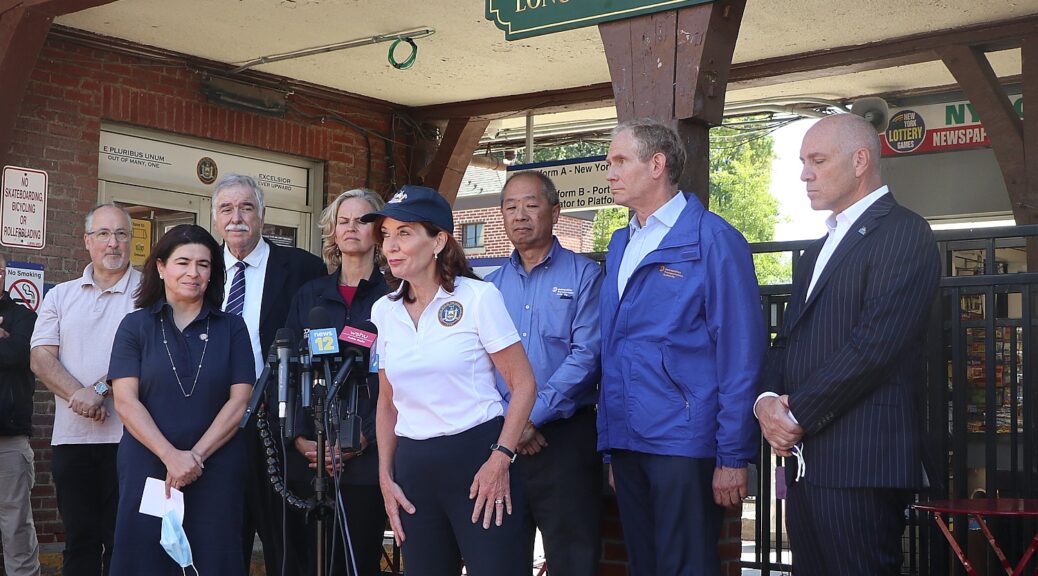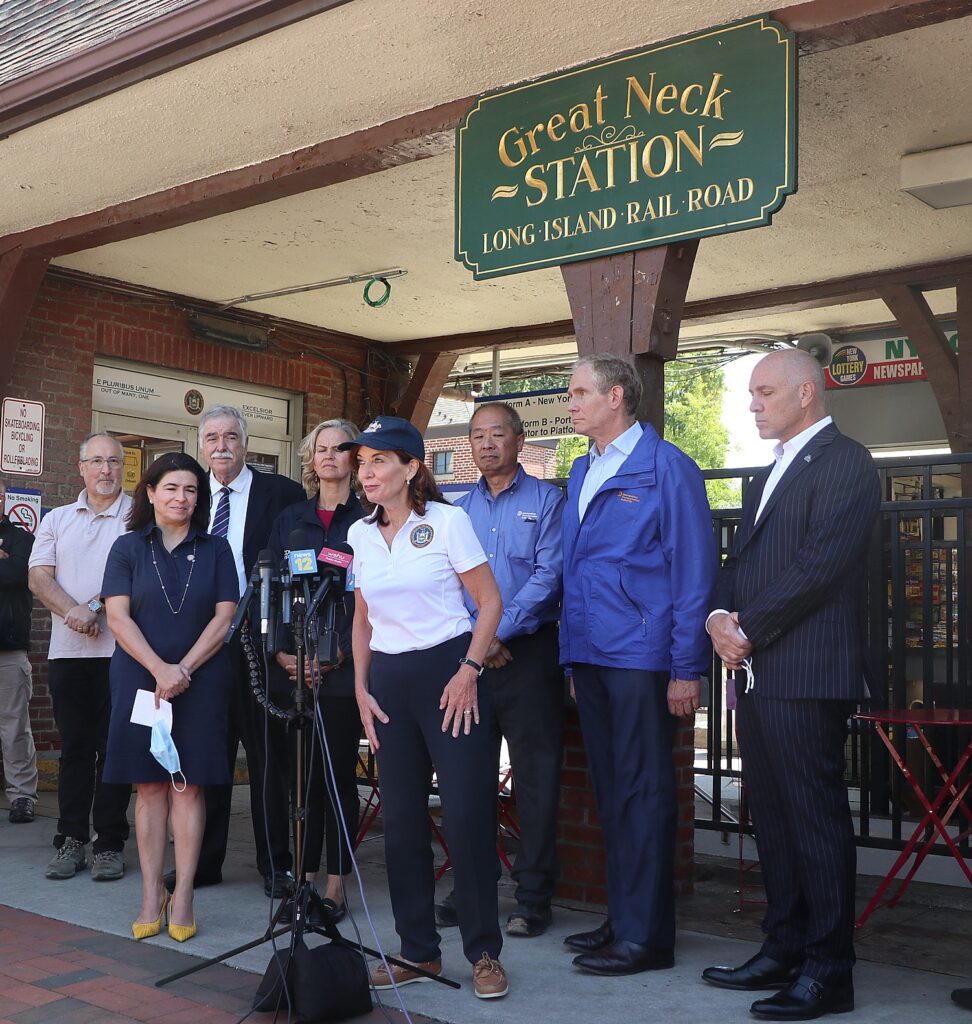
On the occasion of President Joe Biden’s address to the U.S. Conference of Mayors, January 21, the White House issued a fact sheet detailing some of the ways the Biden-Harris Administration is working with Mayors to deliver for communities across the country, and what passing the Build Back Better agenda could mean:
Getting Shots in Arms and Saving Lives
Since the start of his Administration, President Biden has prioritized local partnerships and has worked closely with mayors across the country who have been instrumental as trusted sources of information about the COVID-19 pandemic and vaccines.
Working with local governments, the Administration has shipped over 160 million pieces of personal protective equipment – gloves, gowns, masks – to protect frontline health care workers in cities across the United States. Since first launching surge response teams on July 1st, the Administration has deployed over 3,000 personnel to 39 states and 4 U.S. territories. The Administration also recently worked with several mayors and local jurisdictions to surge federal testing support and federal test sites to several cities.
Over 115 mayors across the country joined the White House, HHS, and We Can Do This campaign to launch a Mayors Challenge to Increase COVID-19 Vaccinations. This campaign was instrumental in increasing the adult vaccination rate through mayors sharing best practices and launching innovative efforts to boost vaccinations, including grassroots outreach, mobile and neighborhood vaccine clinics, incentives, prizes, and other efforts.
- Richmond, VA Mayor Levar Stoney as co-lead of the Mayors Challenge, launched the #HotVaccinatedSummer campaign with the Richmond Health Department focused on taking the vaccine to residents through mobile vaccination units, pop-up vaccine sites at grocery stores, food pantries, apartment complexes, and churches, and neighborhood block parties.
- Baton Rouge Mayor Sharon Weston Broome and New Orleans Mayor LaToya Cantrell, mayors of Louisiana’s two largest cities, launched a month-long, inter-city “New Orleans vs Baton Rouge COVID challenge” to motivate citizens to get vaccinated.
- Detroit, MI Mayor Mike Duggan launched an innovative “Good Neighbor Program” where residents received gift cards for driving their neighbors to get vaccinated, as well as a door-to-door vaccination education canvassing effort.
- San Antonio, TX Mayor Ron Nirenberg along with making pop-up vaccine clinics accessible, collaborated with local artists to create murals reminding residents of the importance of getting vaccinated.
Getting People Back to Work
President Biden has grown the economy faster than any first-year administration ever with 6.4 million jobs added, the most in one year on record. The unemployment rate is 3.9% – four years faster than projected because of the American Rescue Plan. The Biden-Harris agenda has provided substantial resources to state and local governments to expand and improve America’s workforce development system so that workers of all kinds from diverse communities will be prepared and successful in good-paying union jobs.
The American Rescue Plan (ARP) included $350 billion in state and local fiscal recovery funds that governments can use to assist workers who want and are available to work – including job training, public jobs programs, job fairs, childcare, transportation, hiring bonuses, and subsidized employment efforts). The ARP also invested $3 billion in the Commerce Department’s Economic Development Administration (EDA) to assist communities in their efforts to build back better from the pandemic, including $1 billion for the Build Back Better Regional Challenge and $500 million for a Good Jobs Challenge that will support sector partnerships that bring employers, unions, non-profits, community colleges, training providers, and local governments together to enhance local training and hiring efforts.
- Building Bridges to Infrastructure Jobs:
- Washington, DC is using ARP resources to expand the city’s Infrastructure Academy to ensure a diverse workforce is ready to fill the infrastructure jobs that will be created by the historic bipartisan infrastructure law.
- Milwaukee, WI has dedicated ARP funds to launch a lead abatement workforce development program and an Earn and Learn program which assists young people entering manufacturing and other high-skill jobs.
- Phoenix, AZ is using Rescue Plan funds to partner with local community colleges and the private sector on job training programs that not only will re-skill and re-employ individuals for new careers in high demand workforce areas, such as manufacturing, construction, and the region’s emerging semiconductor industry.
- Supporting our Essential Education Workers:
- Seattle, WA used ARP fiscal recovery funds to provide premium pay for local child care workers, up to $835 per worker who have been there for at least 6 months.
- Seattle, WA used ARP fiscal recovery funds to provide premium pay for local child care workers, up to $835 per worker who have been there for at least 6 months.
- Bolstering our Health Care Workforce:
- Chicago, IL is leveraging ARP funds to build a 2,200 public health workforce working as vaccine ambassadors and addressing vaccine resistance.
- New York City is dedicating ARP funds to bolster their public health workforce through the New York City Public Health Corps program, which will focus on a range of public health needs – from vaccine access, to primary care, to mental health counseling.
Building a Better America
Since President Biden signed the Bipartisan Infrastructure Law, the Biden-Harris Administration has hit the ground running with a focus on fostering strong partnerships and working with mayors to implement the largest long-term investment in America’s infrastructure and competitiveness in nearly a century. The historic Bipartisan Infrastructure Law will rebuild crumbling road and bridges, replace lead pipes, help provide high-speed internet to every family in America, and produce concrete results that change people’s lives for the better. These results will create good-paying, union jobs, support domestic manufacturing and supply chains, and position the United States to win the 21st century. As the Administration implements the law, it is following through on President Biden’s commitment to ensure investments advance equity and racial justice, reach communities all across the country – including rural communities, communities of color, and disability communities – and strengthen the nation’s resilience to climate change. Since the enactment of the Bipartisan Infrastructure Law, the Biden Administration has it the ground running. Some of the key actions since the law’s passage include:
- Understanding the importance of strong partnership with local governments to deliver results on the Bipartisan Infrastructure Law, the White House appointed Mitch Landrieu, former Mayor of New Orleans and former President of the US Conference of Mayors, as Infrastructure Implementation Coordinator.
- The U.S. Department of Transportation (USDOT) and Federal Highway Administration (FHWA) announced $27 billion in funding to replace, repair, and rehabilitate bridges across the country over the next five years, including many locally-owned “off system” bridges.
- The U.S. Army Corps of Engineers announced that it will invest more than $14 billion of funding for over 500 projects across 52 states and territories. These key projects will strengthen the nation’s supply chain, provide significant new economic opportunities nationwide, and bolster our defenses against climate change.
- USDOT awarded $1 billion in Rebuilding American Infrastructure with Sustainability and Equity (RAISE) grants to invest in 90 major projects across 47 states funding that will be boosted by an additional $7.5 billion in the Bipartisan Infrastructure Law.
- The Federal Aviation Administration (FAA) at USDOT announced $3 billion for 3,075 airports across the country that can use investments to upgrade critical infrastructure.
- The Vice President announced the Administration’s Lead Pipe and Paint Action Plan, which includes action items focused on collaboration with local partners to accelerate the replacement of lead pipes over the next decade. As part of this plan, EPA announced $7.4 billion in funding allocations for states to upgrade America’s aging water infrastructure, sewerage systems, pipes and service lines, and more.
- The Federal Communications Commission launched the Affordable Connectivity Program providing broadband subsidies of up to $30/month for low-income households (up to $75/month for households on Tribal Lands) and up to $100 towards the purchase of a desktop, laptop or tablet computer.
- EPA announced $1 billion in funding to clean up 49 Superfund sites across 24 states to accelerate cleanup at dozens of other sites across the country, stop toxic waste from harming communities, and create good-paying jobs.
- The Department of the Interior released initial guidance for the states interested in applying for funding to cap and plug orphaned oil and gas wells that reduce methane emissions and create jobs, with 26 states expressing interest in a portion of the $4.7 billion in funding for well plugging, remediation and restoration available in infrastructure programs.
- The Department of Energy launched a new Building a Better Grid initiative to accelerate the deployment of new transition lines, and it released a notice of intent to inform the design and implementation of this historic investment.
The Bipartisan Infrastructure Law includes billions of dollars in competitive funding available to cities, towns, and municipalities across dozens of new and existing programs. As local governments begin to rebuild and reinvest in their communities, the Biden-Harris Administration stands ready to support local leaders as they combine funding streams, organize around their priorities, and build local support for long overdue infrastructure projects. The White House released a fact sheet highlights 25 already available or soon-to-be-available sources of funding that local governments – particularly cities – can compete or apply for directly. The White House will also be releasing a comprehensive guidebook of all available funding from the Bipartisan Infrastructure Law in the coming weeks.
Addressing Supply Chain Blockages
As our economy has turned back on from the unprecedented shutdown resulting from the pandemic, our supply chains have been strained. The Administration is working closely with mayors and local governments across the country to mitigate supply chain blockages and ensure shelves are stocked.
- The Administration’s port envoy has held weekly meetings with city-owned ports, including the Ports of Los Angeles and Long Beach, to identify ways to reduce congestion and move toward 24/7 operations, which reduces the emissions and traffic in communities.
- The Department of Transportation awarded more than $241 million in discretionary grants to improve ports facilities and address supply chain disruptions in 19 cities, including Houston, TX; Brunswick, GA; Bay St Louis, MS; Tell City, IN; Alpena, MI; Delcambre, LA; Oakland, CA; Portsmouth, VA; Tacoma, WA; and Long Beach, CA.
- The Administration is working to help schools experiencing challenges purchasing and reliably obtaining food for their meal plans. USDA has committed $1.5 billion for schools and states to purchase foods including funding to purchase local foods from historically underserved producers and announced an adjustment in school meal reimbursements that put an estimated $750 million more into school meal programs across the nation this year.
Advancing Local Climate Action
On Day One, President Biden rejoined the Paris Agreement, reestablished U.S. leadership, and renewed the federal government’s partnership with the states, cities, Tribes, and localities that carried forward America’s progress on climate. Since then, President Biden has deployed clean wind and solar energy across the country, jumpstarted an electric vehicle future that will be built in America, advanced environmental justice in underserved communities, and taken aggressive action to make our country more resilient to climate change and extreme weather.
Today, President Biden will announce how the Biden-Harris Administration is teaming up with states, cities, labor, and industry to launch the Building Performance Standards Coalition, a first-of-its-kind partnership between 33 state and local governments dedicated to delivering cleaner, healthier, and more affordable buildings. States and cities part of the coalition will design and implement building performance standards that create good paying union jobs, lower the cost of energy bills for consumers, keep residents and workers safe from harmful pollution, and cut emissions from the building sector.
The Administration is also empowering local leaders to advance climate solutions across other sectors—for example:
- The Department of Energy set a new National Community Solar Partnership target of powering 5 million homes by 2025, with on-demand technical assistance available to local governments, and launched the SolarAPP+ tool to help them speed up permitting of rooftop solar installations.
- The Department of Transportation announced $182 million in grants for transit agencies to deploy zero-emission and low-emission transit buses, including awards to the Chicago Transit Authority; Anaheim, CA; Fort Collins, CO; Lawrence, KS; Jackson, MS; Fayetteville, NC; Lincoln, NE; Norman, OK; and more.
- The EPA announced $50 million for environmental justice initiatives using ARP funds, including water infrastructure job training in Baltimore, MD; indoor air quality improvements in Fort Collins, CO; and outreach on asthma and environmental hazards in Hartford, CT.
- FEMA announced $1 billion for the FY2021 Building Resilient Infrastructure and Communities program, available for cities and other levels of government to proactively invest in community resilience to hurricanes, wildfires, and other disasters.
- In November 2021, President Biden and 15 bipartisan mayors representing communities across the country participated in COP26, where the President announced bold plans to reduce methane emissions, create clean energy jobs, and build back better with infrastructure initiatives that advance prosperity and combat the climate crisis.
Addressing Gun Violence and Crime
During the President’s first year in office, the Biden-Harris Administration has partnered with mayors across the country on actions to reduce gun violence and has provided historic levels of funding for community-oriented policing and expanding community violence interventions (CVI) – neighborhood-based programs proven to combat gun violence. The Administration has made historic levels of funding from the American Rescue Plan – including $350 billion in state and local funding – available to state and local governments for law enforcement purposes to advance community policing strategies and community violence interventions.
- Working with 16-jurisdictions, the White House launched the Community Violence Intervention Collaborative, a cohort of mayors, law enforcement, CVI experts and philanthropic organizations committed to using ARP funding to increase investment in their community violence intervention infrastructure and share best practices.
- Cities including Milwaukee, WI; Albuquerque, NM; Syracuse, NY; and Mobile, AL responded to the President’s call by committing and deploying ARP funds for advancing community-oriented policing.
- Mayors from cities across the country including Seattle, WA; Buffalo, NY; and Atlanta, GA have committed to deploy ARP fund for community violence interventions following a memo from Senior White House advisors on how state and local officials can implement ARP funding into CVI work.
- Cities across the country including St. Louis, MO and Tucson, AZ committed to investing ARP funding in public safety strategies such as summer jobs for young adults and substance abuse and mental health services.
Prevent Housing Instability and Homelessness
During the President’s first year in office, the Biden-Harris Administration partnered with mayors across the country to keep Americans housed. The American Rescue Plan (ARP) included over $21 billion for the Emergency Rental Assistance (ERA) program. These funds, together with $25 billion signed into law under the previous Administration but implemented under this Administration, enabled households to catch up on rent and avoid evictions. State and local grantees obligated over $25 billion in ERA in 2021, and these funds contributed to a historically low eviction filing rate. Also included within ARP were $5 billion in supplemental funding for HOME, which enables state and local governments to create and preserve affordable housing, and $5 billion in emergency housing vouchers to help people experiencing and at risk of homelessness secure housing.
- In June, 46 cities joined the White House to create eviction prevention action plans as part of a first-of-its-kind summit. More than 100 eviction diversion programs were created or expanded as part of this partnership with the White House and local leaders.
- Mayors from Louisville, Milwaukee, San Antonio, and Boston shared best practices in subsequent White House events including strategies to prevent evictions and distribute rental assistance to renters and landlords in need.
- Dozens of mayors have signed onto House America, a federal initiative aimed at maximizing the ARP resources to address homelessness. The goal of this initiative is to cumulatively re-house 100,000 households experiencing homelessness and add 20,000 new units of affordable housing into the development pipeline by the end of 2022.
Building an Orderly, Fair, and Humane Immigration System
The Biden-Harris Administration is working to build a humane, orderly, and fair 21st century immigration system at the border and beyond. One that invests in smart technology and infrastructure at the border, that prioritizes our resources and values immigrants living in our country and contributing to our communities for generations, and that once again welcomes refugees and is a beacon of light for those seeking safe haven.
Since day one, the Biden-Harris Administration took steps to undo the wrongdoings of the previous Administration, including getting rid of the Muslim ban, taking steps to protect DACA recipients, and restoring our asylum system. On day one, President Biden also sent his immigration bill to Congress – The U.S. Citizenship Act – which laid out the components needed to build an updated immigration system that reflects our values and responds to our hemisphere’s current needs.
Working with the Department of Homeland Security, the Department of State and non-profit organizations in Mexico and the United States, the Administration assisted 13,000 people in the wind down of the Migrant Protection Protocol to fight their cases in the United States. The Administration also designated Temporary Protected Status (TPS) to Haiti, Venezuela, Yemen, Syria, Somalia, and Burma, and expanded to El Salvador and Honduras.
The President tasked Vice President Harris with leading efforts to address the root causes of migration from Mexico, Guatemala, El Salvador, and Honduras. The Vice President announced $310 million in urgent humanitarian relief in April 2021, in addition to the President’s FY22 budget request for $861 million for Central America. The Vice President also secured $1.2 billion from the private sector to create job programs and invest in the economic stability and prosperity for our partner countries. In addition to the work the Vice President is leading, the Administration is working with countries in South America and leaders in the hemisphere to address migration as a regional issue that necessitates regional leadership and a regional response.
The Administration remains committed to immigration reform, to restoring asylum, and to working with partners to ensure the safety, security, and dignity of immigrants in the region:
- Engaged mayors and cities to amplify the broad sweeping impact President Biden’s U.S. Citizenship Act would have on all 11 million undocumented immigrants, including farm workers and individuals with Temporary Protected Status.
- Partnered with cities including San Diego, Long Beach, Pomona, Dallas, Houston, and San Antonio to stand up Emergency Influx Sites to provide temporary shelter and care for thousands of unaccompanied children.
- Awarded $110 million in supplemental humanitarian funding to the National Board for Emergency Food and Shelter Program eligible to cities and services providers providing humanitarian assistance to migrants at the southern border.
- Regularly engaged bipartisan border mayors to discuss and coordinate rebuilding America’s border management and asylum systems that were previously gutted by the prior administration. Additionally, engaged local elected leaders in the Rio Grande Valley, San Diego, and El Centro border sectors to protect border communities from the physical dangers resulting from the previous administration’s approach to border wall construction.
Welcoming Refugees and Resettlement Efforts
The Biden-Harris Administration has taken a whole-of-America approach to safely, securely, and effectively welcome more than 76,000 Afghan allies to the United States through the Operation Allies Welcome.
In close coordination with Departments and Agencies across the Federal government, the Administration has worked with state and local officials; refugee resettlement organizations; veterans; faith, private sector, and non-profit leaders to ensure Afghans are set up for success in their new communities. The White House Operation Allies Welcome team provided briefings to USCM and visited resettlement sites in six states to engage with local officials and stakeholders on the frontlines of welcoming our Afghan allies. In his capacity as OAW Coordinator, Jack Markell attended the 2021 USCM Summer Meeting in Dayton, Ohio to brief mayors on their important role in the resettlement effort.
- USCM Past President Dayton Mayor Nan Whaley and Hartford Mayor Luke Bronin led the effort for USCM’s resolution in support of Afghan resettlement and welcomed briefings from senior Administration officials to keep mayors updated on resettlement efforts
- Houston Mayor Sylvester Turner worked with local resettlement agencies to raise more than $8.5 million dollars for the Houston Afghan Resettlement Fund (HARF) to help the local resettlement agencies provide additional services for Afghan evacuees
- Oklahoma City Mayor David Holt collaborated with the local resettlement agency to identify additional funding stream to for affordable housing for Afghan evacuees
- Lansing Mayor Andy Schor worked with the local school district to ensure a warm welcome to arriving Afghans students and families.
Sacramento Mayor Darryl Steinberg coordinated with state, county, and local leaders to create a new coalition called the American Network of Services for Afghanistan Refugees (ANSAR) to assist in meeting the needs of Afghan families.
In addition to President Biden, ten members of the President’s Cabinet spoke at the USCM Winter Meeting, including Secretary of the Treasury Janet Yellen, Secretary of Health and Human Services Xavier Becerra, Secretary of the Department of Homeland Security Alejandro Mayorkas, Secretary of Labor Marty Walsh, Secretary of Education Miguel Cardona, Secretary of Transportation Pete Buttigieg, Secretary of Commerce Gina Raimondo, Secretary of Housing and Urban Development Marcia Fudge, Attorney General Merrick Garland, and EPA Administrator Regan. Senior Administration officials including ARP Coordinator Gene Sperling, Infrastructure Implementation Coordinator Mitch Landrieu, and Director of Intergovernmental Affairs Julie Rodriguez will also speak at the event.

